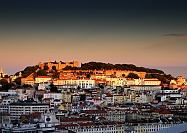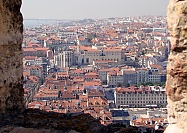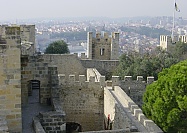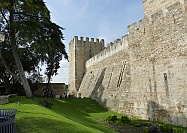The Castle is perched on top of one of the many hills Lisbon has, this one right in Alfama quarters, the most traditional part of town and where it all started. It consists of the castle, ruins of the former royal palace and part of the neighborhood for the elite.
The fortification, built by the Moors in the mid-11th century, was the last defensive stronghold for the elite who resided on the citadel: the Moorish governor whose palace was nearby, and the elite city administrators whose homes are visible today in the Archaeological Site.
After Dom Afonso Henriques conquered Lisbon on October 25th, 1147, to become the first king of Portugal, the Castelo de S. Jorge began its golden age as home for the royalty. The old Moorish period buildings were modified and enlarged to receive the king, his court and the bishop, as well as the Royal Archives in one of the castle towers. Once the Portuguese kings had transformed the Castelo de S. Jorge into a royal palace in the 13th century, it was chosen to receive many notable Portuguese and foreign figures, as well as hold festivities as well as coronations during the 14th, 15th and 16th centuries.
When Portugal became part of the Spanish Crown in 1580, the Castelo de S. Jorge took on a more important military purpose which continued until the early 20th century. Some areas were converted, while new ones emerged. But it was after the Lisbon earthquake of 1755 that the most substantial renovation work took place on the old medieval alcáçova, with many new buildings gradually obstructing older ruins. In the 19th century, military installations covered the entire monument area.
But as important as the history are the views you get from this extraordinary location, a great place to see the river and all downtown Lisbon with a map to help locate all other relevante sites!




